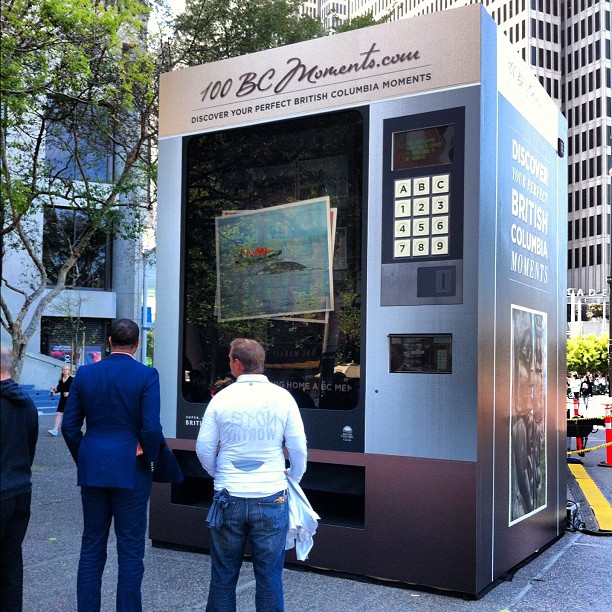8.4: Consumer Behaviour in Tourism and Hospitality
- Page ID
- 9348
\( \newcommand{\vecs}[1]{\overset { \scriptstyle \rightharpoonup} {\mathbf{#1}} } \)
\( \newcommand{\vecd}[1]{\overset{-\!-\!\rightharpoonup}{\vphantom{a}\smash {#1}}} \)
\( \newcommand{\id}{\mathrm{id}}\) \( \newcommand{\Span}{\mathrm{span}}\)
( \newcommand{\kernel}{\mathrm{null}\,}\) \( \newcommand{\range}{\mathrm{range}\,}\)
\( \newcommand{\RealPart}{\mathrm{Re}}\) \( \newcommand{\ImaginaryPart}{\mathrm{Im}}\)
\( \newcommand{\Argument}{\mathrm{Arg}}\) \( \newcommand{\norm}[1]{\| #1 \|}\)
\( \newcommand{\inner}[2]{\langle #1, #2 \rangle}\)
\( \newcommand{\Span}{\mathrm{span}}\)
\( \newcommand{\id}{\mathrm{id}}\)
\( \newcommand{\Span}{\mathrm{span}}\)
\( \newcommand{\kernel}{\mathrm{null}\,}\)
\( \newcommand{\range}{\mathrm{range}\,}\)
\( \newcommand{\RealPart}{\mathrm{Re}}\)
\( \newcommand{\ImaginaryPart}{\mathrm{Im}}\)
\( \newcommand{\Argument}{\mathrm{Arg}}\)
\( \newcommand{\norm}[1]{\| #1 \|}\)
\( \newcommand{\inner}[2]{\langle #1, #2 \rangle}\)
\( \newcommand{\Span}{\mathrm{span}}\) \( \newcommand{\AA}{\unicode[.8,0]{x212B}}\)
\( \newcommand{\vectorA}[1]{\vec{#1}} % arrow\)
\( \newcommand{\vectorAt}[1]{\vec{\text{#1}}} % arrow\)
\( \newcommand{\vectorB}[1]{\overset { \scriptstyle \rightharpoonup} {\mathbf{#1}} } \)
\( \newcommand{\vectorC}[1]{\textbf{#1}} \)
\( \newcommand{\vectorD}[1]{\overrightarrow{#1}} \)
\( \newcommand{\vectorDt}[1]{\overrightarrow{\text{#1}}} \)
\( \newcommand{\vectE}[1]{\overset{-\!-\!\rightharpoonup}{\vphantom{a}\smash{\mathbf {#1}}}} \)
\( \newcommand{\vecs}[1]{\overset { \scriptstyle \rightharpoonup} {\mathbf{#1}} } \)
\( \newcommand{\vecd}[1]{\overset{-\!-\!\rightharpoonup}{\vphantom{a}\smash {#1}}} \)
\(\newcommand{\avec}{\mathbf a}\) \(\newcommand{\bvec}{\mathbf b}\) \(\newcommand{\cvec}{\mathbf c}\) \(\newcommand{\dvec}{\mathbf d}\) \(\newcommand{\dtil}{\widetilde{\mathbf d}}\) \(\newcommand{\evec}{\mathbf e}\) \(\newcommand{\fvec}{\mathbf f}\) \(\newcommand{\nvec}{\mathbf n}\) \(\newcommand{\pvec}{\mathbf p}\) \(\newcommand{\qvec}{\mathbf q}\) \(\newcommand{\svec}{\mathbf s}\) \(\newcommand{\tvec}{\mathbf t}\) \(\newcommand{\uvec}{\mathbf u}\) \(\newcommand{\vvec}{\mathbf v}\) \(\newcommand{\wvec}{\mathbf w}\) \(\newcommand{\xvec}{\mathbf x}\) \(\newcommand{\yvec}{\mathbf y}\) \(\newcommand{\zvec}{\mathbf z}\) \(\newcommand{\rvec}{\mathbf r}\) \(\newcommand{\mvec}{\mathbf m}\) \(\newcommand{\zerovec}{\mathbf 0}\) \(\newcommand{\onevec}{\mathbf 1}\) \(\newcommand{\real}{\mathbb R}\) \(\newcommand{\twovec}[2]{\left[\begin{array}{r}#1 \\ #2 \end{array}\right]}\) \(\newcommand{\ctwovec}[2]{\left[\begin{array}{c}#1 \\ #2 \end{array}\right]}\) \(\newcommand{\threevec}[3]{\left[\begin{array}{r}#1 \\ #2 \\ #3 \end{array}\right]}\) \(\newcommand{\cthreevec}[3]{\left[\begin{array}{c}#1 \\ #2 \\ #3 \end{array}\right]}\) \(\newcommand{\fourvec}[4]{\left[\begin{array}{r}#1 \\ #2 \\ #3 \\ #4 \end{array}\right]}\) \(\newcommand{\cfourvec}[4]{\left[\begin{array}{c}#1 \\ #2 \\ #3 \\ #4 \end{array}\right]}\) \(\newcommand{\fivevec}[5]{\left[\begin{array}{r}#1 \\ #2 \\ #3 \\ #4 \\ #5 \\ \end{array}\right]}\) \(\newcommand{\cfivevec}[5]{\left[\begin{array}{c}#1 \\ #2 \\ #3 \\ #4 \\ #5 \\ \end{array}\right]}\) \(\newcommand{\mattwo}[4]{\left[\begin{array}{rr}#1 \amp #2 \\ #3 \amp #4 \\ \end{array}\right]}\) \(\newcommand{\laspan}[1]{\text{Span}\{#1\}}\) \(\newcommand{\bcal}{\cal B}\) \(\newcommand{\ccal}{\cal C}\) \(\newcommand{\scal}{\cal S}\) \(\newcommand{\wcal}{\cal W}\) \(\newcommand{\ecal}{\cal E}\) \(\newcommand{\coords}[2]{\left\{#1\right\}_{#2}}\) \(\newcommand{\gray}[1]{\color{gray}{#1}}\) \(\newcommand{\lgray}[1]{\color{lightgray}{#1}}\) \(\newcommand{\rank}{\operatorname{rank}}\) \(\newcommand{\row}{\text{Row}}\) \(\newcommand{\col}{\text{Col}}\) \(\renewcommand{\row}{\text{Row}}\) \(\newcommand{\nul}{\text{Nul}}\) \(\newcommand{\var}{\text{Var}}\) \(\newcommand{\corr}{\text{corr}}\) \(\newcommand{\len}[1]{\left|#1\right|}\) \(\newcommand{\bbar}{\overline{\bvec}}\) \(\newcommand{\bhat}{\widehat{\bvec}}\) \(\newcommand{\bperp}{\bvec^\perp}\) \(\newcommand{\xhat}{\widehat{\xvec}}\) \(\newcommand{\vhat}{\widehat{\vvec}}\) \(\newcommand{\uhat}{\widehat{\uvec}}\) \(\newcommand{\what}{\widehat{\wvec}}\) \(\newcommand{\Sighat}{\widehat{\Sigma}}\) \(\newcommand{\lt}{<}\) \(\newcommand{\gt}{>}\) \(\newcommand{\amp}{&}\) \(\definecolor{fillinmathshade}{gray}{0.9}\)Customers use their senses to see, hear, smell, and touch (and sometimes taste) to decipher messages from businesses, deciding on a product or service based on their perception of the facts rather than, at times, the actual facts. A number of factors have been shown to impact the choices the consumer makes, including personal factors, which reflect needs, wants, motivations, previous experience, and a person’s lifestyle, and interpersonal factors, such as culture, social class, family, and opinion leaders.
Perception Is Reality
The area of perception can be further broken down to screens and filters, biases, selective retention, and closure (Morrison, 2010). Let’s look at these concepts in more detail.

The world is filled with things that stimulate people. People are exposed to thousands of messages every day. Some stimuli come from the people around us; for example, a person on the bus might be wearing a branded cap, the bus may have advertising pasted all over it, and free newspapers distributed at the bus station could be filled with advertising. The human brain cannot absorb and remember all of these messages; people will screen out most of the stimuli they are exposed to. They may remember a piece or segment of a message they have seen or heard.
Take a Closer Look: 100 BC Moments Vending Machine
As part of a 2012 integrated campaign, Destination BC (then operating as Tourism BC) created a vending machine that offered users the opportunity to experience moments that could be part of their visit to British Columbia. At 14 feet tall, this vending machine dispensed free items like bikes, surfboards, and discounts on flights to encourage people to travel British Columbia. This experiential innovation was a way to provide a tangible element to intangible services. It was complemented by an online and social media campaign using the hashtag #100BCMoments and special web landing page at 100BCMoments.com. A video of the San Francisco installation earned hundreds of thousands of views on YouTube; cutting through the clutter both in person and online. Watch it here: “Giant Tourism BC Vending Machine comes to San Francisco” on YouTube.

Perceptual Biases
Everyone has perceptual biases; each person sees things from his or her own unique view of the world. An advertising message can be received and changed to something very different from the marketer’s intended statement.
Selective Retention
Once messages have made it through the screens, filters, and biases, they still may not be retained for long. Customers will practise selective retention, holding on only to the information that supports their beliefs and attitudes.
Closure

The brain does not like incomplete images. There is a state of psychological tension present until the image is complete (closure). Where information is unavailable to round out the images, the mind adds the missing data. Over time, through the use of imagery and music (such as jingles), messages are ingrained in a customer’s mind, and he or she automatically adds the company’s name, whether it is mentioned or not.
Applying Psychology to Marketing
Marketers may determine a degree of predictability about customer perceptions. Customers are likely to:
- Screen out information that they are already familiar with
- Notice and retain information to satisfy a need they are aware of (want)
- Purchase services that reflect the image they perceive themselves to project
- Notice and retain things out of the norm
- Attach credibility to personal information rather than commercially generated information
Customers are less likely to:
- Use perceptual biases to distort information received on an interpersonal basis
- Absorb complicated information that requires effort to comprehend
- Notice and retain information about a competitive service or product if they are satisfied with another brand
Tourism marketers are in the business of reminding and making customers aware of their needs. Customers have to be motivated to act on satisfying their wants and needs, while marketers need to trigger the process by supplying objectives and potential motives.
Spotlight On: Tourism Victoria’s Visitor Centre
Tourism Victoria’s Visitor Centre is a member of the Visitor Centre Network. Staff are available to provide travellers with tourist information, assistance, and advice. The Tourism Victoria Visitor Centre provides travellers with a wide range of services, including professional visitor counselling, helpful travel information and literature, and accommodation reservations (Tourism Victoria, 2020).
Consumer Decision-Making Process

In 1968, Kollat, Blackwell and Engel released the first edition of a book called Consumer Behavior where they identified a distinct five-step pattern for consumer decision-making (1972). These steps are: need recognition, information search, pre-purchase evaluation, purchase, and post-purchase evaluation.
Here are some critical components at each stage:
- Need recognition: For this process to start there needs to be a stimulus; a need must be triggered and identified.
- Information search: The customer begins to consult different sources of information; personal (marketer dominated) and intrapersonal (non-marketer) factors will likely be used.
- Pre-purchase evaluation: After researching the choices, the customer starts to evaluate options using both objective criteria, such as price and location, and subjective criteria, such as the perceived status of the product or service.
- Purchase: The customer intends to buy the product or service that best matches the criteria, although he or she can still be influenced by a number of factors, such as friends and family who disagree with the purchase, or a change in personal finances.
- Post-purchase evaluation: After use, the customer evaluates the purchase against expectations; if these don’t match, the customer will be either dissatisfied (expectations not met) or impressed (expectations exceeded). For this reason, it’s best for hospitality and tourism providers to “under promise” and “over deliver.”
Spotlight On: BC Ferries Vacations
BC Ferries Vacations offers over 100 unique travel packages to 40 destinations, connecting travellers to unbeatable scenery, accommodations, and activities. With world-class hotels, activities, and adventures to choose from, travellers can experience BC’s pristine wildlife or urban coastal culture with each customized vacation package. BC Ferries Vacation’s travel experts help travellers create a personalized vacation complete with ferry reservations to bring all-in-one convenience, quality, and value. And, in partnership with some of BC’s best hotels, BC Ferries Vacations is able to provide customers with the best rates, customer service, and overall experiences, whether travelling to Vancouver, Victoria, the north coast, or to remote and amazing destinations in-between (BC Ferries Services, 2020).
In order to reach consumers and stimulate need, tourism marketers can employ a number of traditional and online channels. These are detailed in the next section.


